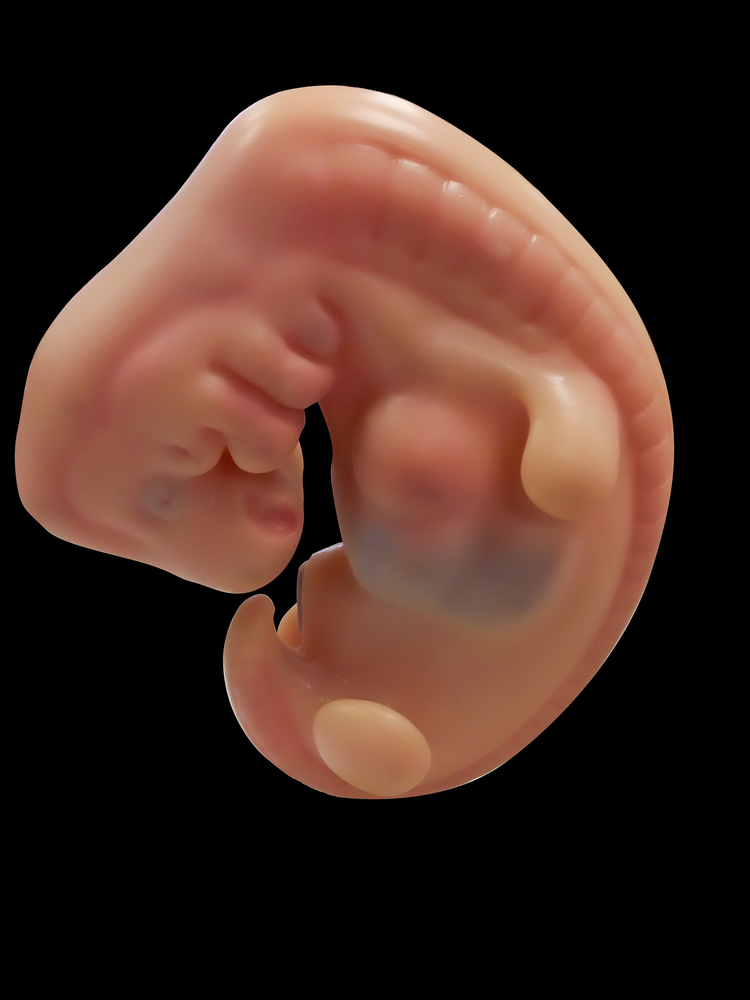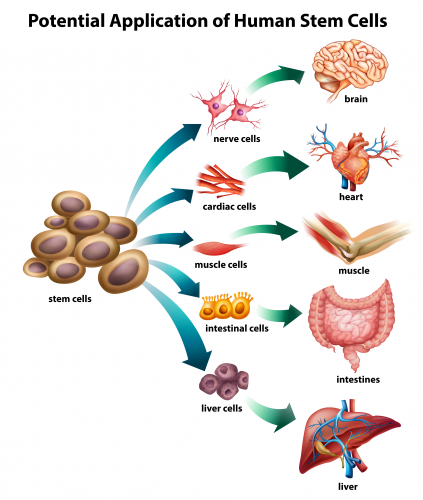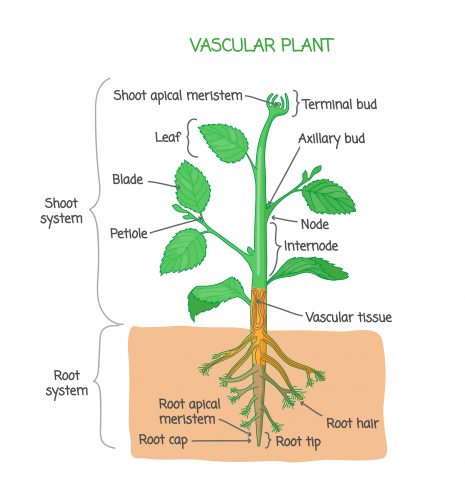
The alien lookalike above is actually a picture of an embryo at around six weeks old! A zygote is formed when an egg is fertilised by a sperm. After fertilisation the zygote starts to divide, it's now called an embryo. All the cells are identical to each other and can become any type of cell. They're embryonic stem cells. These can stay as stem cells or become differentiated (specialised) to become another type of cell such as a muscle cell, red blood cell or a nerve cell. Sometimes, you will find adult stem cells among the differentiated cells - these can become differentiated later on.

Function of stem cells
Our chromosomes have thousands of genes that can code for many proteins. We don’t need all of these genetic codes to be active all of the time in our body cells, so they're switched off. This way the cell only produces the proteins it needs to function.
Specialised cells produce specific proteins because the genes coding for these proteins are activated or switched on. Embryonic stem cells are able to differentiate into any cell type. This is because any of the genes in their chromosomes are able to be switched on.
Stem cells are important for many reasons. In the embryo, stem cells will develop into the whole body of the organism, including all of the organs such as the heart, lungs, skin and other tissues and cells. In some adult tissues, such as bone marrow, adult stem cells are used to replace cells that are lost through normal wear and tear, injury or disease.
Uses of stem cells
The fact that stem cells can undergo cell division and become differentiated to any cell type, makes stem cells really interesting to scientists. It opens the door to potential new treatments to replace cells lost to injury and disease, and research may help to develop alternatives to organ transplants, as well as to enable testing the effects of new drugs.
Embryonic stem cells can be used in research to help scientists develop new cells to replace damaged or diseased cells. The stem cells could be injected into damaged organs to rebuild the tissues. This would reduce the need for organ transplants. The stem cells would need to have the same genes as the patient, otherwise they would be rejected by the patient’s immune system. They would need to be clones. The DNA of an embryo cell can be replaced with the DNA from a patient’s cell. The embryo produces stem cells containing the patient’s genes. The cells will not be rejected, so immune-suppressing drugs are not needed. This process is called therapeutic cloning.
Ethical issues
There are different types of issues depending on the type of cells involved. With embryonic stem cells, the issue of using embryos can be a sensitive topic. Often, the issue of whether it's right or wrong to use embryos for research or for therapy poses an ethical dilemma.
To obtain embryonic stem cells, the early embryo may have to be destroyed. Some people's religious or personal beliefs view the embryo as representing life and that it should only be used to create a baby. People may view the early embryo as a person and therefore believe it has the same rights as any other living person. Others may believe the embryo isn't a person as it doesn't share any features or properties with people.
So you can see, it's quite a complicated situation with no clear right or wrong answer! That's the thing with ethical issues, they will vary from person to person as they are dependent on personal values, morals and beliefs.
Because of this, the government regulates the use of stem cells in research and medicines in many countries. The government will help oversee whether the benefits of stem cell use outweigh the risks. For example, obtaining and storing stem cells can be difficult. Mutations can occur in stem cells and they could become contaminated with pathogens. If there are too many risks and not many benefits, stem cell research or therapy could be rejected. It all depends on individual cases.
In science, obtaining a balanced view is important and often there is no one correct answer.
Stem cells in plants
Stem cells are not only found in animals but plants too. Let's find out more below.

In plant cells, cell division only happens in certain areas called meristems. Meristems are found at the tips of roots and shoots and in between tissues. The cells in the meristem can divide over and over again to produce non-specialised cells. Some of these cells continue to divide, allowing the plant to grow taller and wider throughout its life.
Other non-specialised cells that are produced at the meristem can develop into any type of specialised plant cell and go on to form different plant tissues, leaves and flowers. This activity contributes to plant growth and development.
As with human stem cells, plant meristem cells have many uses too. For example, they can be used to produce clones of plants very quickly and economically. Also, plants that have special features such as being disease resistant or frost resistant can be cloned to produce lots of crops. Another use is to protect rare plant species from extinction by cloning them.
In the following activity, you will explain the functions of stem cells and their uses.








